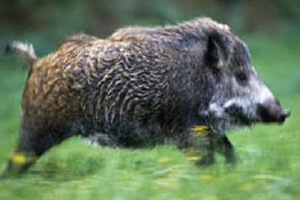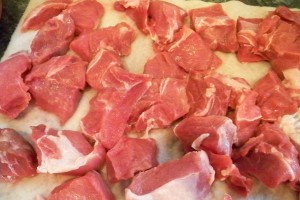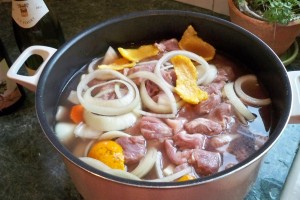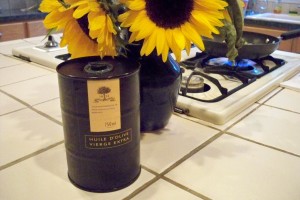ALLOW AT LEAST THREE DAYS TO PREPARE THIS MEAL, FOUR EVEN BETTER.
A few words about how I came up with this wild boar daube recipe. While writing Opposites Attack, I studied many French cookbooks and let my taste buds guide me as I cooked the recipes in my head. Now, years later, many readers have asked for recipes so I thought I’d try a few. I have no idea where those originals are that I gazed upon so longingly. Thankfully, we have the Internet. I looked for wild boar recipes that had the ingredients Jean-Luc mentioned in chapter 15: “It should be cooked for at least seven hours and served with baked apples, cèpe mushrooms and dauphin potatoes.” He doesn’t say they’re cooked together, but those were the keywords I initially searched.
His meal also sounded more autumnal and Alyce, our heroine, made her daube for a large group in the summer. I found a pork recipe on foodandwine.com that laid the foundation, a few for wild boar that were similar but used red wine instead of white, then did my own thing to make it “lighter.” This recipe recommended using Viognier, a white, for the wine and D’artagnan and Broken Arrow Ranch to buy the boar. I used D’artagnan. If making this dish in cooler weather, use a red wine for the marinade.
So, you’ve read Part One on hunting and/or buying wild boar. We’ve now procured the frozen stew meat, it arrived Wednesday and thawed overnight in a big pot in the refrigerator. Now it’s Thursday. First of two dinners will be Saturday. Take the meat out of the plastic bags they arrived in and rinse each piece with cool water. Set them on doubled paper towels. Pat the pieces dry with more paper towels. Trim excess fat.
Never having done this before, I wasn’t sure if the meat was going to be melt-in-your-mouth or dry as dust. I cut any large pieces into bite-sized ones so no one would have to saw away at it.
I chose two Viogniers from Southern France. The one on the right is a Michel Gassier 2011 Viognier and wonderful for drinking as well (of course I had to try it). They’re a fourth generation winemaker in Caissargues, France, with clay and lime terroir. It was the perfect choice, especially when I later read what they said about family on their site: “We do not inherit the Earth from our ancestors; we borrow it from our children. We are but a link in a chain, receiving and then transmitting, following the path of generations past. Solidarity, trust, commitment, and love nurture the human spirit to tackle even the most ambitious projects.”
I would say a wild boar daube for over 20 people is ambitious.
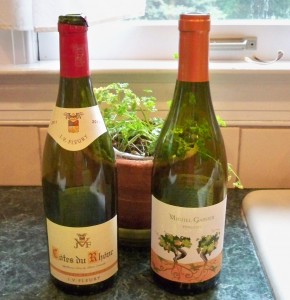 The other Viognier was a 2011 from J. V. Fluery, the oldest continuously operating winery in the Rhône Valley. It had more of a bite to it and was quite drinkable as well. Wine expert Mark Oldman described Viognier in his award-winning book Oldman’s Guide to Outsmarting Wine as “tropical fruit aromas so intense that they seem to spell out their own vaporous exclamation point.” Novelist and wine writer Jay McInerney chimes in with “[it] puts you in the mood for romance.”
The other Viognier was a 2011 from J. V. Fluery, the oldest continuously operating winery in the Rhône Valley. It had more of a bite to it and was quite drinkable as well. Wine expert Mark Oldman described Viognier in his award-winning book Oldman’s Guide to Outsmarting Wine as “tropical fruit aromas so intense that they seem to spell out their own vaporous exclamation point.” Novelist and wine writer Jay McInerney chimes in with “[it] puts you in the mood for romance.”
Excellent! This dinner wasn’t just an excuse to have a bunch of adventurous friends over to try an unusual recipe, it was also a blind date. Yes, a mutual friend had fixed me up with a man brave enough to come to a party where he would know no one and eat something new concocted by someone who had never made it before. When it comes to the dating pool, it’s sink or swim. And he was a swimmer, literally and figuratively. See the wishbone lurking in the background? Time to pull out all the stops and stop wishing for a new kitchen. I’ve lived with the faux green marble Formica from the 1980s for so long I’m used to it. I do not kid myself that one day it will come back in style.
Here’s the marinade that went into a 10-quart pot. Though there are lots of nutrients in an unpeeled carrot, I find organic ones are often so fresh and earthy they taste almost soapy. To paraphrase Jean-Luc in Chapter 17, my American senses are obviously “poor, plugged-up, unused and withering.” Leave the peel on if you like. Jean-Luc is quite fussy in the kitchen, but as Alyce finally figures out, the more time it takes him to cook, the more time he doesn’t have to write. He loves not writing. Alyce knows how to cut corners and have it work out fine. I’ll give you choices along the way to side with one or the other. One thing they always agree on: the more local, fresh and organic the ingredients the better.
Marinade for 10 pounds of wild boar stew meat to serve 20-ish people.
2 bottles of Viognier
2 large sweet onions peeled and sliced
4 carrots cut into thick slices, peeled or unpeeled (your preference)
The peel of three clementines or two oranges torn into pieces (Jean-Luc would cut them carefully, as would Alyce if anyone were to see them. They’re being tossed the next day.)
Bouquet garni of parsley, thyme and bay leaves tied with twine is the Jean-Luc way (unwaxed, unflavored dental floss will do for Alyce). He believes in always using fresh herbs (except when oregano is called for in which it should be dried leaves rubbed between your palms). Alyce believes it’s perfectly fine to throw all those ingredients in with the spice bundle. One step. No tying a little piece of anything that’s hiding somewhere, or nowhere and you have to buy more.
Spice bundle. 1-1/4 tablespoon of culinary lavender, about 20 peppercorns (Jean-Luc would crush them in a grinder, Alyce doesn’t want to have to clean the grinder later), 20 juniper berries crushed with your fingers (that she can handle). Put it in about a 6×6 inch square of cheesecloth and tie up with string. Alyce combined the bouquet garni and spice bundle ingredients and tied the cheesecloth with the string she was supposed to use to truss a chicken but thought trussing a waste of time. See? If she’d used it for that she wouldn’t have it for this.
Add the meat to the pot. Pour wine over it. Add onions, carrot and clementine/orange peels, throw the cheesecloth and/or bouquet garni in the pot. Stir it slowly with a big spoon to mix everything well. What the hay, grind a little sea salt and fresh ground pepper on top. It feels good. And throw in a little more culinary lavender. It smells good. But not too much or it gets overwhelming. Lavender should be subtle. Finally, add 1/4 cup of olive oil, preferably extra virgin French olive oil (huile d’olive vierge extra is as close as the Internet). I used the A l’Olivier brand founded in 1822 in Nice. Look at that cute little can. How ah-dor-AH-blah. French olive oil is another full-bodied yet delicate flavor that will have you taking a big inhalation and moaning. Slowly stir everything again.
Put back in the refrigerator and cover to await cooking the following day.
Next: Preparing and cooking the daube
